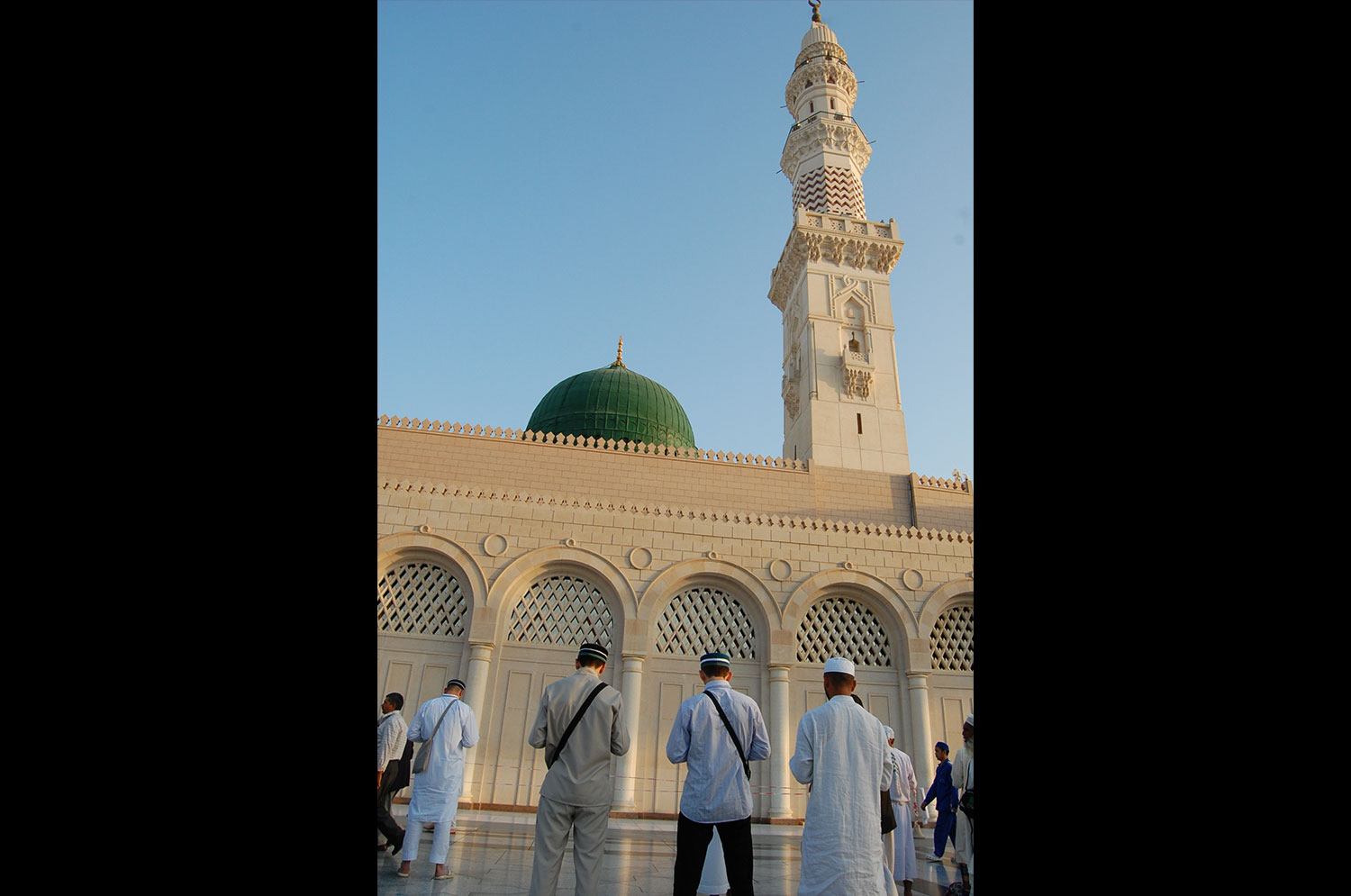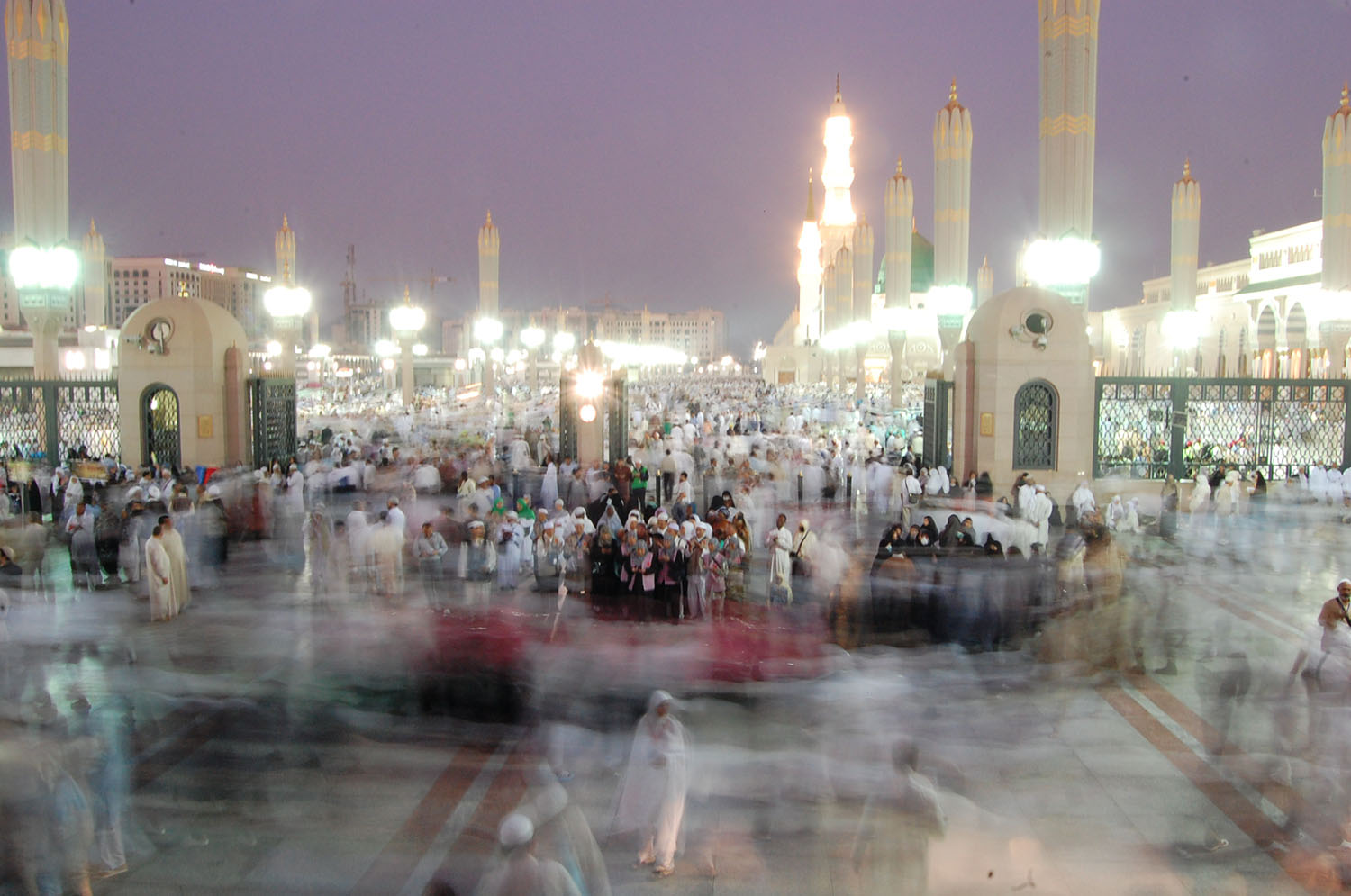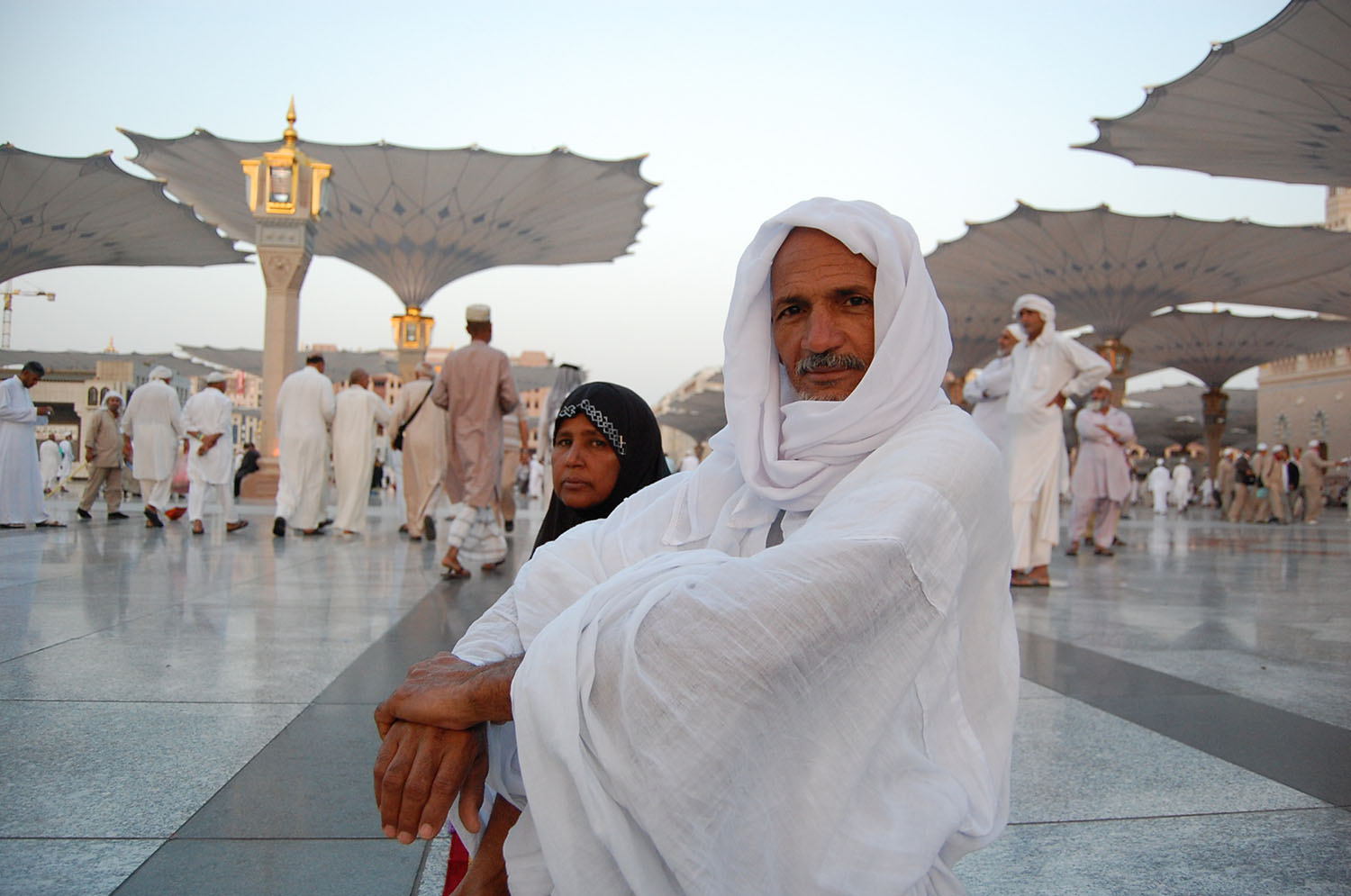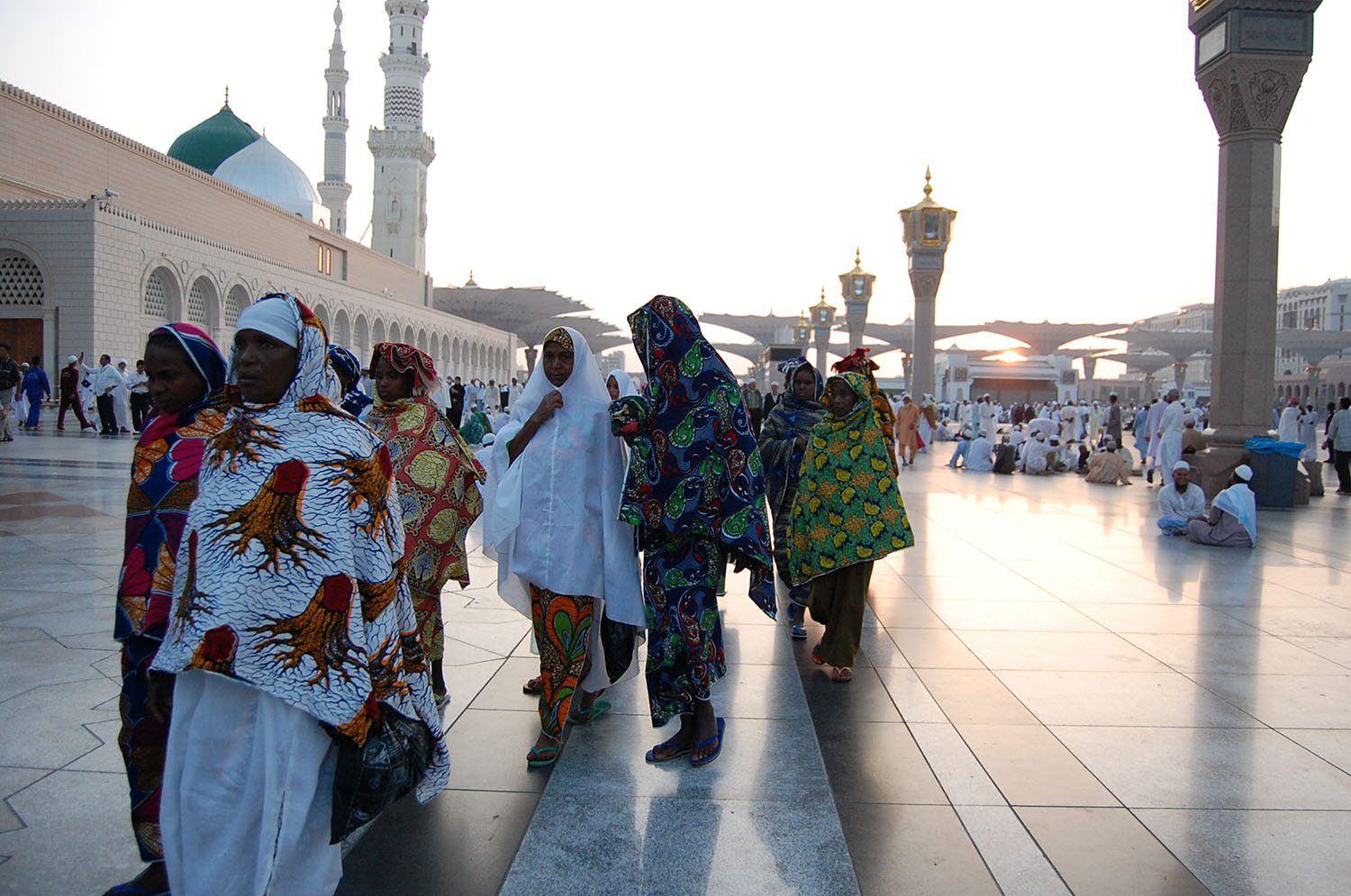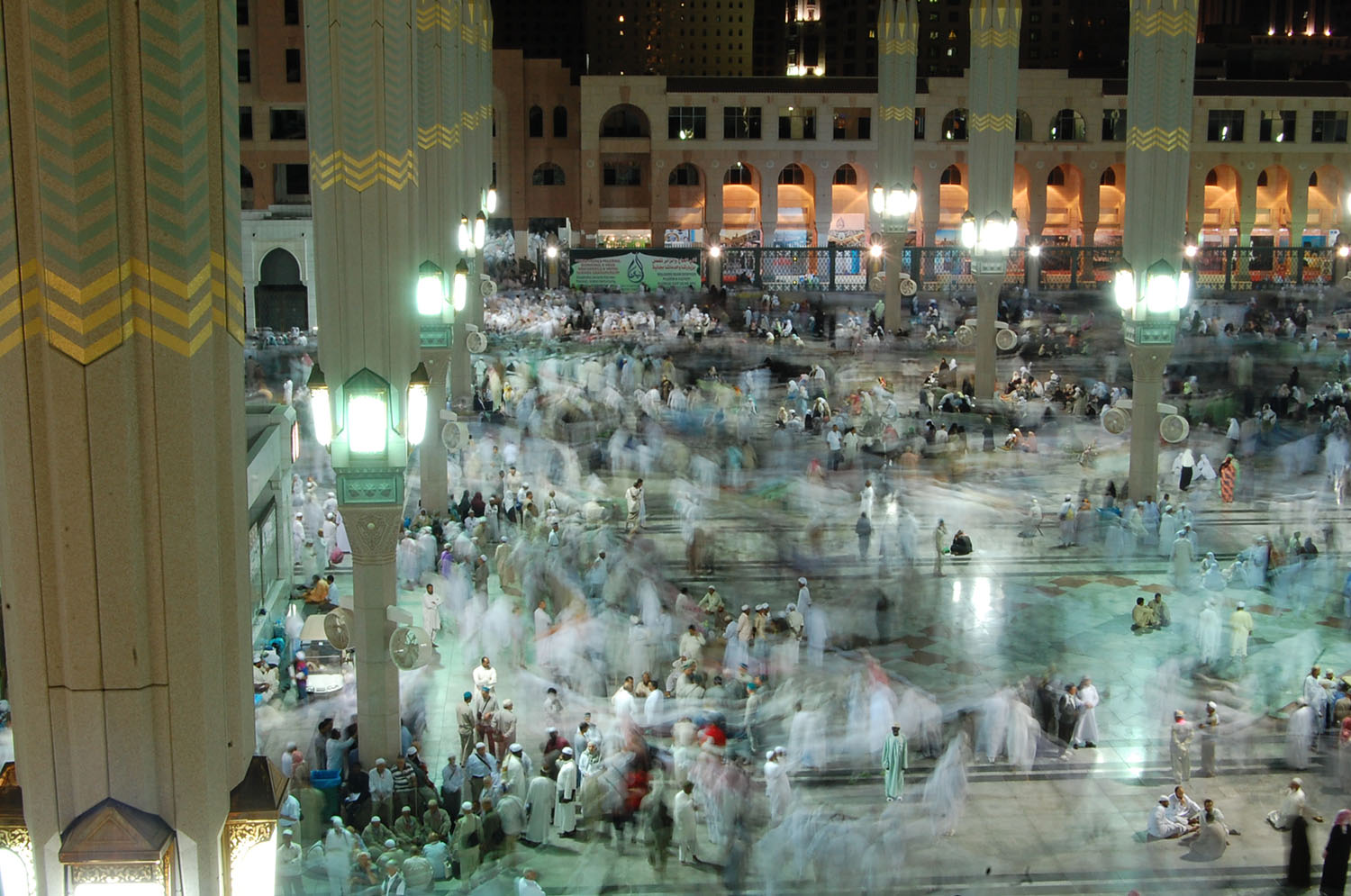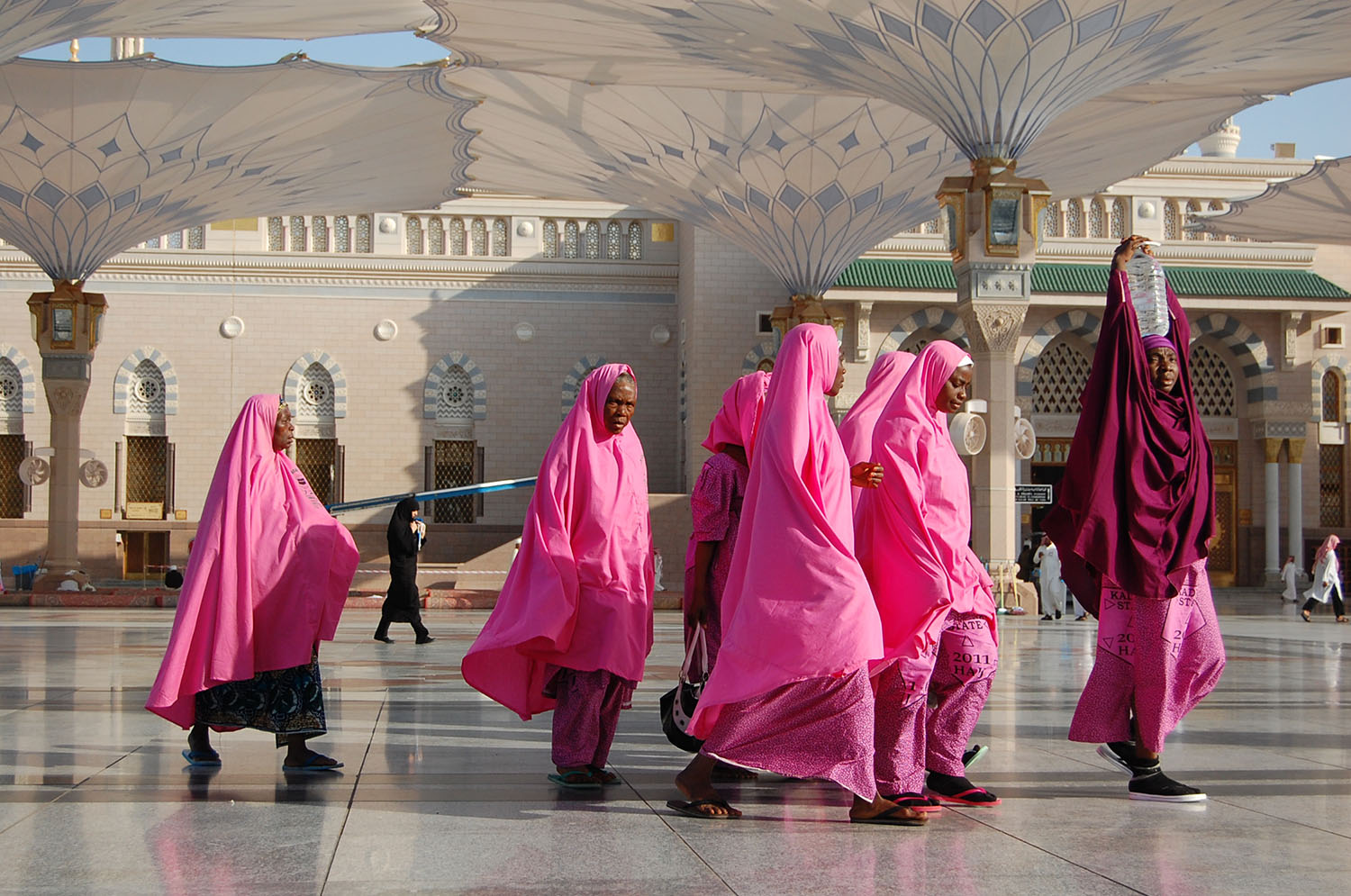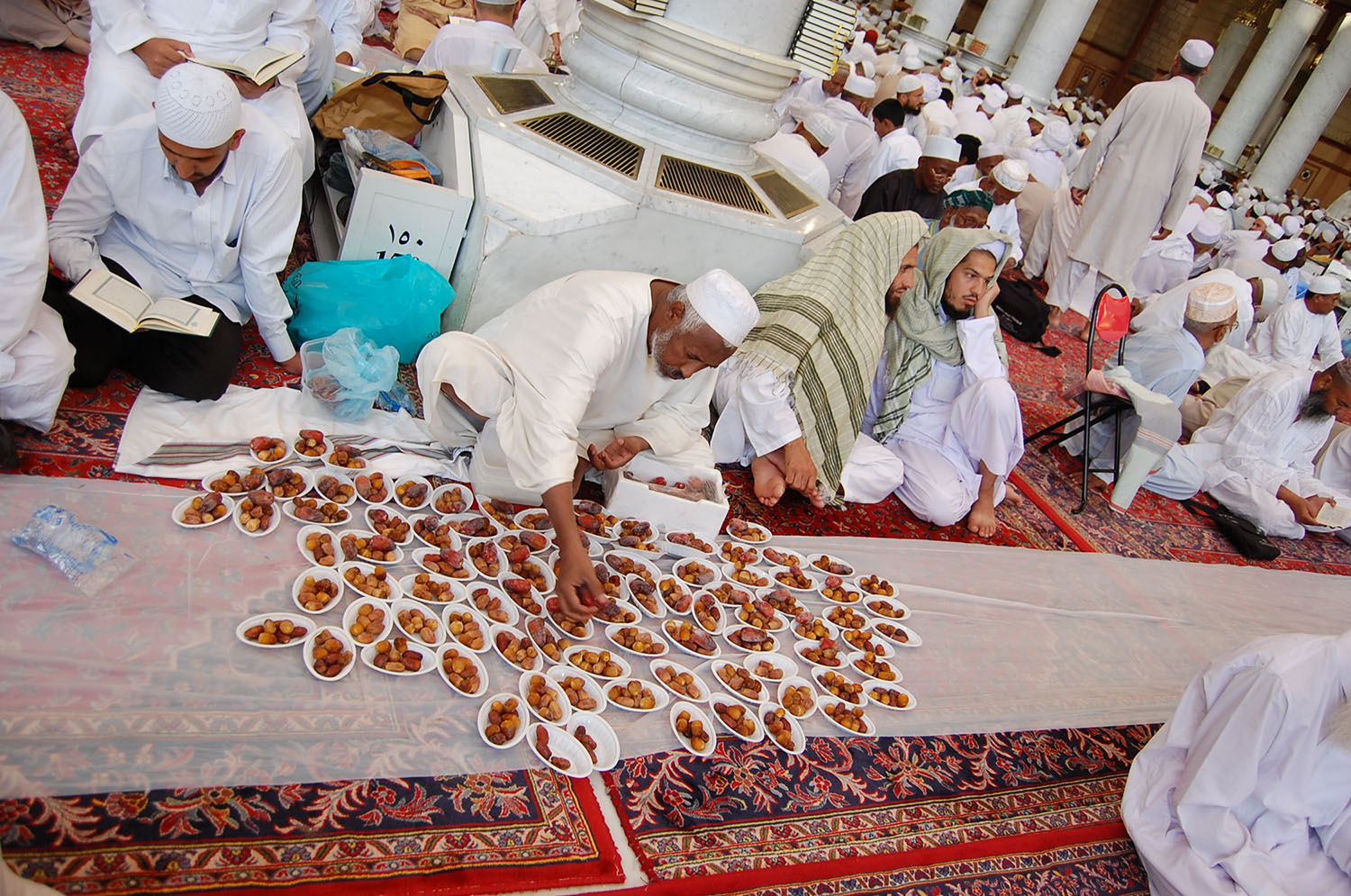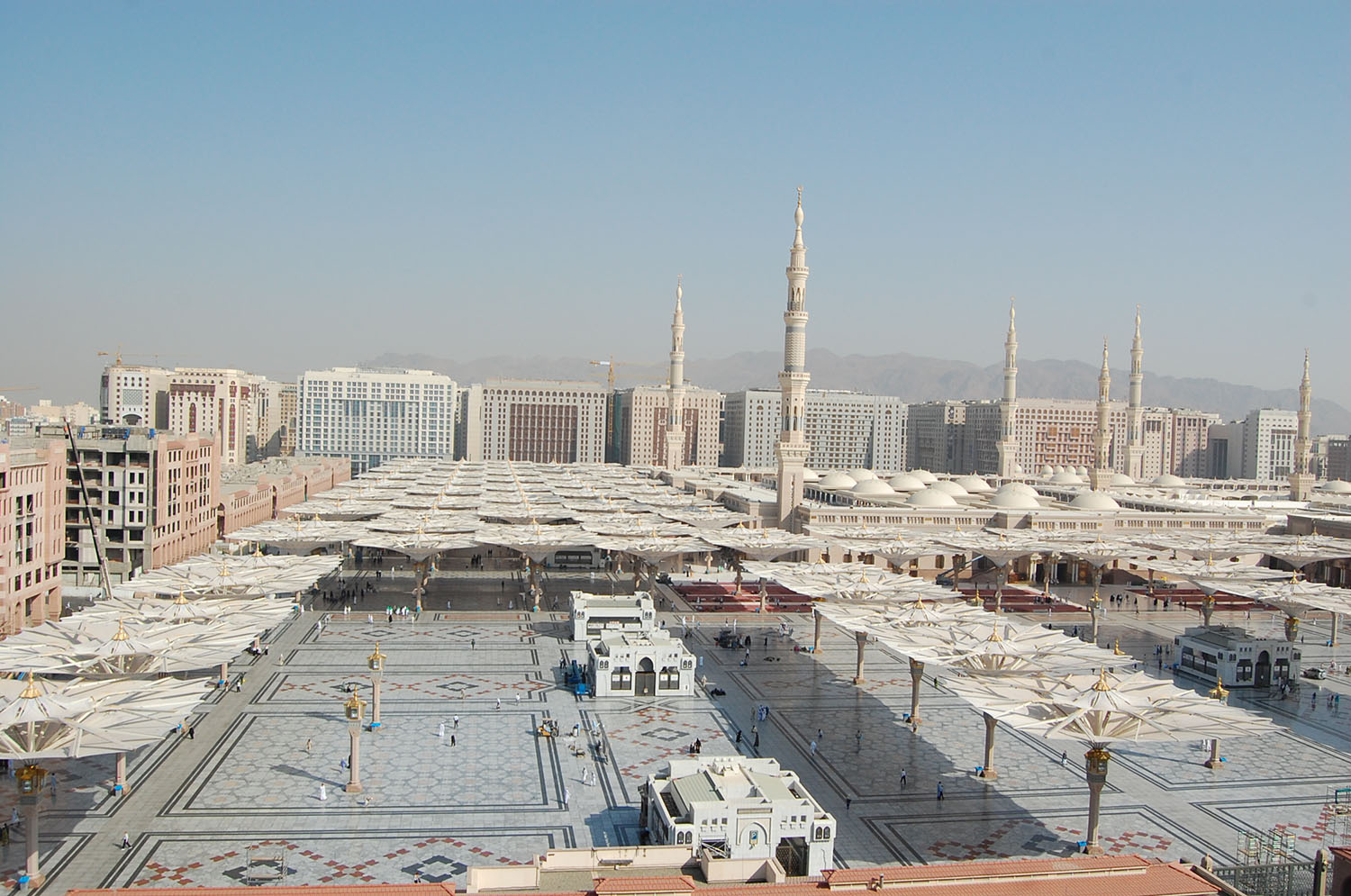The Hajj is one of the five pillars of Islam and the world’s largest pilgrimage. Every able-bodied Muslim is required to make this pilgrimage at least once in their lifetime. The Hajj unfolds in Makkah (present day Mecca) and areas around it. Pilgrims will often, also visit Madinah (present day Medina), where the Prophet Muhammad is buried during their time in Saudi Arabia. We are proud to present the geographical and pictorial journey of the remarkable Hajj vividly documented in A SINNER IN MECCA.
Makkah (Present-day Mecca)
Makkah is Islam’s ground zero. At its ancient heart, a cube shaped structure called the Kaaba, said to have been built by the Prophet Ibrahim (Abraham) and his son Ismail (Ishmael), 21 centuries before Christ.
Masjid al-Haram
Haram is variously translated as sacred, sanctuary, the noble sanctuary and depending on how it’s pronounced, even forbidden. The mosque that houses the Kaaba is the Masjid al-Haram. At 88 acres this is the worlds largest mosque. Unlike any other mosque in the world, men and women are not separated here. As Parvez vividly documents in A SINNER IN MECCA today’s mosque is built on and surrounded by a landscape of destruction. The Saudi’s have even destroyed the home the Prophet Muhammad shared with his first wife Khadija and built a row of toilets in its place. Across from the mosque: garish shopping malls, including the largest, the Abraj al-Bait Towers and even seven star hotels. All around it: a constantly growing, and what Parvez calls, “a fearsome Ayn Randian landscape of towering skyscrapers”. The Saudi ruling family has successfully dwarfed Islam’s holiest spot, the Kaaba. The world’s largest clock tower, the Kingdom Tower looms over the mosque and the Kaaba.
The Kaaba
The Kaaba is Islam’s beating heart. When they pray five times a day, more than a billion Muslims from across the planet face its direction. It is made from granite, and the Saudi’s have made sure that pilgrims will never see its interior. Wikipedia does a great job of describing what lies inside the Kaaba here.
Saee
The ritual of running seven times between the hills of Safa and Marwah is called the Saee. It is a core rite of the Hajj and recreates the struggle of an abandoned mother, Hajjar (Hagar) to save the life of her infant son, Ismail (Ishmael). Abandoned in the desert of pre-Islamic Arabia by the Prophet Ibrahim (Abraham), this mother needed to find water for her infant. The lineage of the Prophet Muhammad would later come from this child, Ismail. The magical well of ZamZam sprang up and centuries later this holy ZamZam water continues to quench the thirst of pilgrims who also carry gallons of it back home, often for entire villages! In today’s Saudi Arabia the running takes place in an air conditioned corridor and the ancient hills have been covered by glass. For Parvez, Hajjar has always been the mother of Islam.
The Touch of the Kaaba
The Saudi’s only sanction carefully controlled images of the Hajj, often presented in aerial views. Unlike the Saudi version, this film takes you right inside the Hajj. The images this film brings have never been seen before. The Kaaba has never been seen in such close proximity. Every grain of sand in the granite cube stands exposed; as do the pilgrims, for whom just touching the surface brings absolution. Parvez repeatedly discovers, the violence that mars this sacred space, as he too tries to join in the touch. In fact his first night during the circling of the Kaaba is filled more with a manic, stampede like environment than any notions of spirituality. It is a rude reminder that not every pilgrim behaves with the compassion and humility the Prophet Muhammad commanded during the Hajj.
Arafat
The day spent in the plains of Arafat, is the Day of Judgment for pilgrims. They only have time till sunset to make all their pleas for forgiveness. There is an urgency to Arafat and a sense of deep piety. This is considered by most Islamic scholars as one of the most important rites of the Hajj pilgrimage. “Hajj is Arafat”, the Prophet Muhammad said. An important location in Arafat is the mountain of Jabal ar-Rahmah (The Mount of Mercy). It is where the Prophet Muhammad stood and delivered his farewell sermon to the first Muslims; the ones who had accompanied him for his only Hajj, towards the end of his life. For Parvez, his day at Arafat was deeply meaningful and transformative.
Muzdalifah
A rocky plain, stretching as far as the eye can see. Pilgrims have to spend an entire night here, out in the open to collect seventy pebbles for stoning the Devil, one of the last rites of the Hajj pilgrimage. There is nothing comfortable about Muzdalifah but as these pictures tell us, smartphones and other glowing objects have become key to making the pilgrims quest on this night a success during the Hajj of the 21st century. (Saudi Arabia’s calendar though, much like the mindset of its Wahabi rulers is still stuck in the 1400’s)
Mina
The world’s largest tent city springs up in Mina, on cue for every year’s pilgrimage. The squalor and filth that Parvez discovers around it, is unimaginable. And while pilgrims from the first world, sleep in air-conditioned tents, a huge population of poorer Hajj pilgrims (many performing the pilgrimage without Saudi visas) sleep in squalor, out in the open. Mina is also the setting where one of the last rituals of the Hajj, the shaving of the male pilgrim’s head takes place. Barbers are aplenty, their methods mostly not hygienic.
Jamrat
Three colossal pillars representing Satan stand at Jamrat. A maze of claustrophobic tunnels leads to it. The pilgrims are commemorating the Prophet Ibrahim’s (Abraham) confrontation with Satan. Chanting AllahuAkbar they hurl their pebbles at the columns, hoping to be rid of the Satans in their lives. Parvez discovers a manic, hellish frenzy here and is also trampled to the ground in a mini stampede. For him, this place in many ways is Hell. This is a place of stampedes and for Parvez, no spirituality lives here.
Faces of Mecca
For Parvez Mecca, during the Hajj turns into the “United Nations of Islam”. Faith built over a lifetime draws millions of Muslims here. Their faces tell the story of the Hajj. The Afghan pilgrim, raising the index finger of his right hand, is signifying the central precept of Islam—Tawhid (the Oneness of God). The others including the Saudi version of the boy scout flashing the peace sign as he stands under the country’s omnipresent flag, are captured at different times during the pilgrimage.
The Motorcycle Diaries
Since their time in pre-Islamic Arabia, Meccans have been known as shrewd businessmen well versed in the art of the hard sell. There are many ways to get around during the modern day Hajj from air-conditioned buses to plain old-fashioned walking. But these crafty young men have created a new way—the motorbike taxis that swerve through massive crowds. These images are Mecca’s motorcycle diaries. All of these motorbikes are taking pilgrims to the tent city of Mina.
The Hajj Schlep
The Hajj is a schlep and Parvez cannot find a better word to describe the endless hours of walking, waiting, jostling or being herded like cattle into tunnels. A century ago it would take pilgrims months, sometimes years to arrive on camel or horseback. Today it’s mostly by air. But what has never changed is the enormous effort born from unshakeable faith that propels Parvez and the pilgrims forward.
A Sunni on the Shia Hajj
As a Sunni Muslim, Parvez deliberately decided to travel on his Hajj with Shia pilgrims. This is Parvez’s Hajj of defiance. For the Shia, who live at the heart of the most bitter divide in Islam, defiance is the norm. For them the desert sands of Saudi Arabia are a constant reminder of the destruction of their history. Parvez joins them as they pray to the graves of Islam’s ancestors at cemeteries that include Jannatul Baqi (in Madinah) and Jannatul Mu’alla (in Makkah) where the Prophet Muhammad’s wife and grandfather are buried. For Saudi Arabia’s strict Wahabis both Parvez and the Shia are infidels.
Madinah (Present-day Medina)
Located some 200 miles from Makkah (present-day Mecca), Madinah is the second holiest city in Islam. The Prophet Muhammad is buried here in a sprawling mosque complex called the Masjid al-Nabi (The Mosque of the Messenger). The location of the Prophet’s grave is represented by a green dome. To the chagrin of the Wahabis many pilgrims pray to that grave and the graves of Islam’s ancestors at the massive cemetery called Jannat al-Baqi (the Garden of Paradise) that borders the complex. The practice of praying to graves is more prevalent amongst Shia pilgrims. The Hajj does not take place in Madinah, but most pilgrims include a visit to this holy city during their time in Saudi Arabia.
